Summary: When I use a "for" loop to add layers to a violin plot (in ggplot), the only layer that is added is the one created by the final loop iteration. Yet in explicit code that mimics the code that the loop would produce, all the layers are added.
Details: I am trying to create violin graphs with overlapping layers, to show the extent that estimate distributions do or do not overlap for several survey question responses, stratified by place. I want to be able to include any number of places, so I have one column in by dataframe for each place, and am trying to use a "for" loop to generate one ggplot layer per place. But the loop only adds the layer from the loop's final iteration.
This code illustrates the problem, and some suggested approaches that failed:
library(ggplot2)
# Create a dataframe with 500 random normal values for responses to 3 survey questions from two cities
topic <- c("Poverty %","Mean Age","% Smokers")
place <- c("Chicago","Miami")
n <- 500
mean <- c(35, 40,58, 50, 25,20)
var <- c( 7, 1.5, 3, .25, .5, 1)
df <- data.frame( topic=rep(topic,rep(n,length(topic)))
,c(rnorm(n,mean[1],var[1]),rnorm(n,mean[3],var[3]),rnorm(n,mean[5],var[5]))
,c(rnorm(n,mean[2],var[2]),rnorm(n,mean[4],var[4]),rnorm(n,mean[6],var[6]))
)
names(df)[2:dim(df)[2]] <- place # Name those last two columns with the corresponding place name.
head(df)
# This "for" loop seems to only execute the final loop (i.e., where p=3)
g <- ggplot(df, aes(factor(topic), df[,2]))
for (p in 2:dim(df)[2]) {
g <- g + geom_violin(aes(y = df[,p], colour = place[p-1]), alpha = 0.3)
}
g
# But mimicing what the for loop does in explicit code works fine, resulting in both "place"s being displayed in the graph.
g <- ggplot(df, aes(factor(topic), df[,2]))
g <- g + geom_violin(aes(y = df[,2], colour = place[2-1]), alpha = 0.3)
g <- g + geom_violin(aes(y = df[,3], colour = place[3-1]), alpha = 0.3)
g
## per http://stackoverflow.com/questions/18444620/set-layers-in-ggplot2-via-loop , I tried
g <- ggplot(df, aes(factor(topic), df[,2]))
for (p in 2:dim(df)[2]) {
df1 <- df[,c(1,p)]
g <- g + geom_violin(aes(y = df1[,2], colour = place[p-1]), alpha = 0.3)
}
g
# but got the same undesired result
# per http://stackoverflow.com/questions/15987367/how-to-add-layers-in-ggplot-using-a-for-loop , I tried
g <- ggplot(df, aes(factor(topic), df[,2]))
for (p in names(df)[-1]) {
cat(p,"\n")
g <- g + geom_violin(aes_string(y = p, colour = p), alpha = 0.3) # produced this error: Error in unit(tic_pos.c, "mm") : 'x' and 'units' must have length > 0
# g <- g + geom_violin(aes_string(y = p ), alpha = 0.3) # produced this error: Error: stat_ydensity requires the following missing aesthetics: y
}
g
# but that failed to produce any graphic, per the errors noted in the "for" loop above


